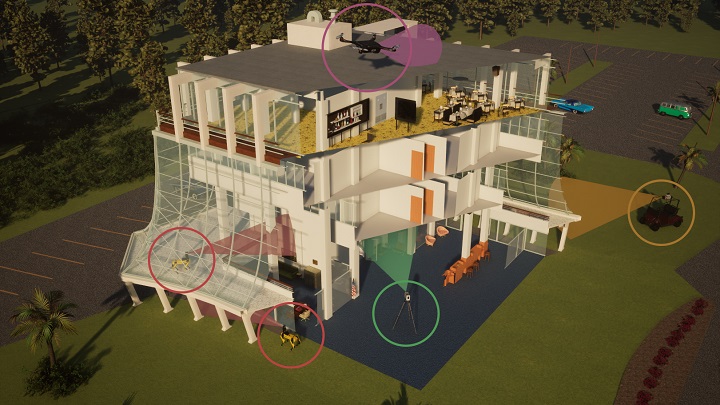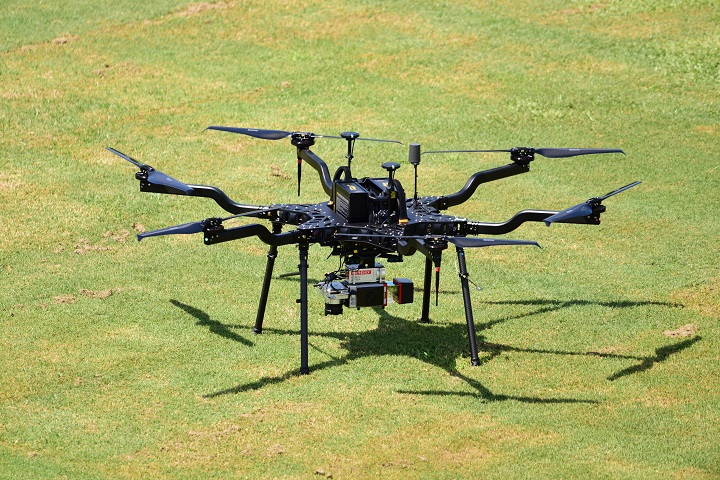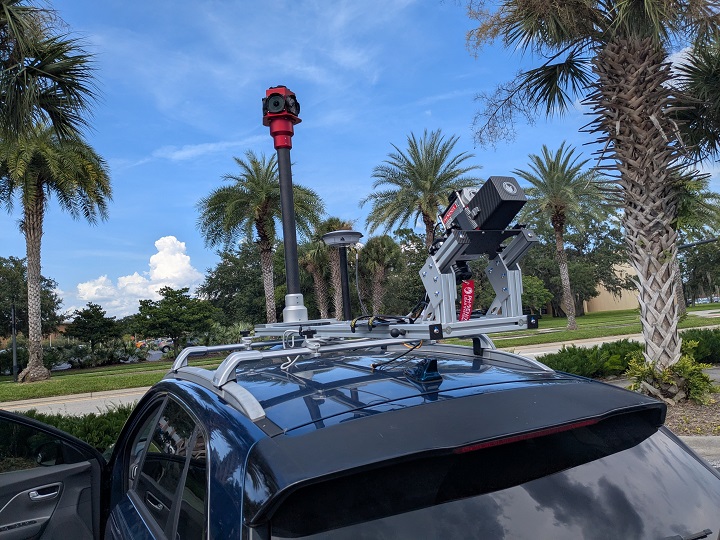
Building cutaway to demonstrate scanner capture potential with the new KnightSight system.
Color Key:
Purple – Phoenix LiDAR based on Harris UAV
Red – Leica BLK ARC atop Boston Dynamics Spot
Green – Leica RTC360 Terrestrial Laser Scanner
Orange – Phoenix LiDAR & Ladybug5 atop UTV



LOCATION: University of Central Florida – Institute for Simulation and Training
DATE: Current
ABOUT THE PROJECT
KnightSight: Integrated LiDAR and Hyperspectral Sensing System for Robustly Mapping Physical Environments is designed to capture and integrate data, both visible and invisible to the human eye, using a new sensing system. Novel sensors will be mounted on a flying drone, quadruped robots, and ground vehicles, enabling KnightSight to gather information in both indoor and outdoor environments. The rapid collection of these visible and invisible datasets will allow researchers to monitor and analyze structural and environmental changes over time.
The new sensing system will consist of co-aligned LiDAR and hyperspectral imaging sensors, a Leica BLK ARC laser scanning unit for the Boston Dynamics Spot quadruped robot, and unmanned aerial vehicles (UAVs) and a utility task vehicle (UTV) for utilizing the sensors from aerial and ground perspectives. Collectively, this will enable numerous new research activities by affording advanced sensing capabilities and robust datasets for multiple domains and areas, including computer science, civil and environmental engineering, materials science, marine biology, archeology, and historic site preservation. The project will specifically advance knowledge on how to visualize and effectively utilize co-aligned LiDAR and hyperspectral data, as well as how to optimize large datasets of such data for public access and use.
Faculty researchers from numerous disciplines throughout the University of Central Florida will have access to the equipment. Additionally, this project will enable graduate and undergraduate students to utilize the equipment and/or resulting datasets for their research. The datasets captured during the project will ultimately be made publicly available.
Acknowledgements:
This project is funded by a National Science Foundation – Major Research Instrumentation Program (MRI) – Track 1 grant. Award Number: 2408003.
